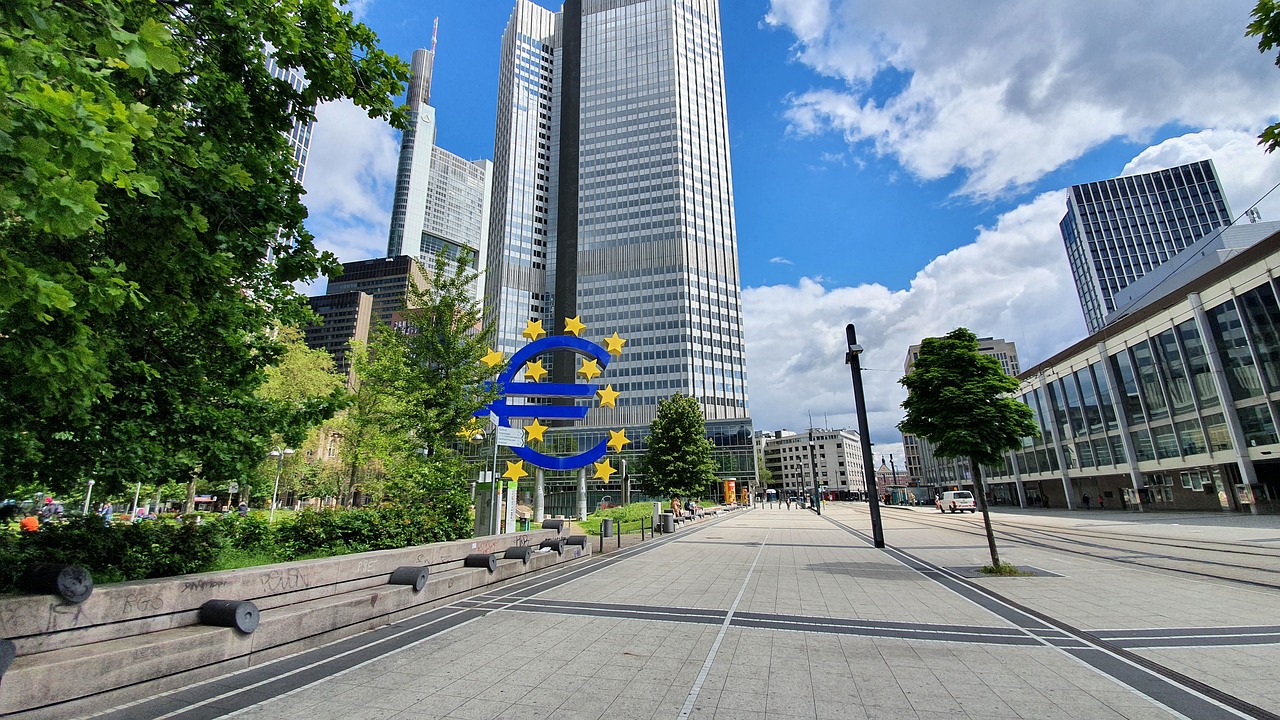Allianz Trade predicts that the ECB will once again keep interest rates unchanged at its next meeting on 25 January and will refrain from their rapid reduction. This will likely be the third time in a row that the deposit rate will be kept at the highly restrictive level of 4.0% – the disinflation trend continues.
Our forecast suggests the first reduction in rates in July (-25 bp), as the ECB Governing Council has displayed reluctance towards premature rate cuts, particularly when real wage growth risks are considered.
Risk factors (inflation increase): real wage growth – expected above 2% annually for about two years – and potential upcoming supply chain disruptions, if the Red Sea crisis lasts longer than three months, which could result in eurozone inflation rising above 3%.
This week, the European Central Bank will once again leave unchanged, once again emphasizing data dependency and pushing back rapid interest rate cuts in time. The ECB is expected to maintain the status quo at its next meeting on 25 January, keeping the deposit rate at a historically high level of 4.0% (MLF: 4.75%, MRO: 4.5%). Quantitative tightening will proceed as announced in December: passive bond rolling in the APP program at an average pace of around 25 billion EUR per month and an additional 7.5 billion EUR from the PEPP program starting in July.
Disinflation persists according to the latest ECB forecasts, despite a rise in core inflation in December from 2.4% year-on-year to 2.9% year-on-year. Monthly core CPI inflation, which excludes energy and food prices and is not influenced by base effects, slightly accelerated in December, but the three-month average remained below the ECB target for the second month in a row. Despite this, inflationary risk remains high in both cases.
On the other hand, the risk of a stronger recession persists, as Germany’s economic weakness could spread through trade channel, as Germany is by far the largest export partner of other major eurozone economies such as France and Italy. Secondly, leading indicators, such as demand for credit and survey data among firms and households, continue to point to a clearer recession, despite some mild improvement recently. At the end – ECB estimates suggest that the full effect of monetary policy on the economy may take three to four quarters. Therefore, approximately 100 bp out of a total of 450 bp rate hikes in this tightening cycle have not yet been fully “digested” by the economy.
Inflation risk persists, and all eyes are on wage growth and possible disruptions in supply caused by the blockade of maritime transport in the Red Sea. As sea traffic largely bypasses the Suez Canal route from Asia to Europe, there are concerns about potential disruptions in the supply chain and a repeat of inflation caused by a negative supply shock. In terms of wages, the latest data confirm that the peak of nominal wage growth has been reached. The average wage per worker in the euro zone slowed to 5.2% year-on-year in the third quarter of 2023 from 5.5% earlier. However, the more current Indeed-wage-tracker indicator, closely watched by the ECB, has not slowed recently and still oscillated around still elevated levels of 3.7-3.9% over the last three months. With inflation falling, the main concern now is that rising real wages could again trigger demand-driven inflation. Our forecasts for wage growth and inflation, which are close to the ECB’s forecasts, mean that real wages will grow by more than 2% annually for about two years – a pace rarely seen in such a long period in the history of the eurozone.
As for the future – we maintain our forecast of two interest rate cuts of 25 basis points by the ECB in July and September, as inflation approaches the central bank’s target, and the negative output gap widens. As economic growth is expected to rebound in the second half of this year, supported by rising real wages and return to potential production, the ECB is most likely to hold back and wait until the inflation target is met in a sustainable manner (this is not expected before the first quarter of 2025). Only then will it continue to cut rates by another 75 bp in 2025. This approach is more conservative compared to market forecasts, which currently price cuts of 130 bp and 40 bp in 2024 and 2025, respectively. However, we believe that the ECB will be very reluctant to cut rates too early and too quickly to avoid a double inflation shock. This view has been confirmed by several ECB representatives, such as Lagarde, Lane, Nagel, and Villeroy in recent days.
